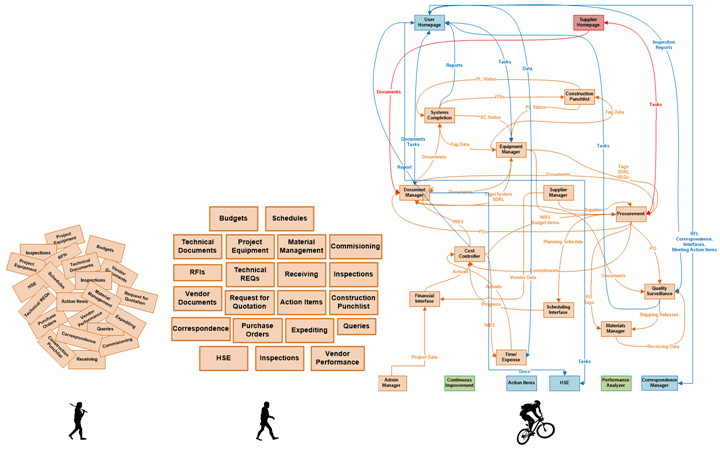Information Is Power
That’s how my twenty-one-year-old phrased it when she told me about the “awesome” lecture her business professor gave. Sir Francis Bacon said it more artfully: “The better information one has, the more one will be able to control events.” It was true in 1597 when Bacon said it. It’s a condition of success today. A statement of the obvious in the information age, right? One would think. Let’s examine that premise in the context of an experience I witnessed from close up.
The client requested the latest records for X data for all project Purchase Orders from Company A and Company B. Company A hardly broke a sweat as it delivered the data package later that same day – and on time at every scheduled interval for the life of the project. Company B needed a little time to sort things out, but promised to catch up. Eighteen months later, Company B is dodging questions, making excuses, and riding what remains of the team to get its X together. And X is just the tip of the iceberg.
I stay in touch with the client and often ask about the project. Company A has its challenges, but information management and handover data aren’t among them – key reasons the client will be working with them on the next project. Company B? Still getting their X together. As fate would have it, their calendar is open to do just that.
If you’re asking yourself what train wreck of a company takes eighteen months to comply with a client data handover request, you might also ask yourself this question: “Could I do it in a day?” And don’t say “it depends on the data”, or “it’s all billable hours”. Efficiency in technological and human resources has never been more attractive. Inflated billable hours have never been more repulsive. If you can’t instantly report or deliver project information at any point in time with a few clicks of the mouse, we should talk.
The two companies in this example actually have more similarities than differences. They each have quality talent and great skills. They share an undeniable work ethic. Each uses the standard office tools, and accounting and scheduling software. Each is committed to the health and success of client, company, and employee.
So, what was it? Why the massive variance in performance on this client request? The two companies’ information management practices were simply not at the same evolutionary stage.

The degree to which each company organized, standardized, integrated, and automated its data, its processes, and its teams was generations apart. The different attitudes toward project data were incredible, yet each had confidence in their approach.
Both companies made promises and guarantees to the client with the full and honest intent to deliver on those promises and guarantees. Both companies backed their guarantees with hard-earned reputations and past successes. Both companies relied on their people to deliver. Company B armed their people with spreadsheets, email and telephones to cobble together their standard office tools.
Company A had ProjecTools.

